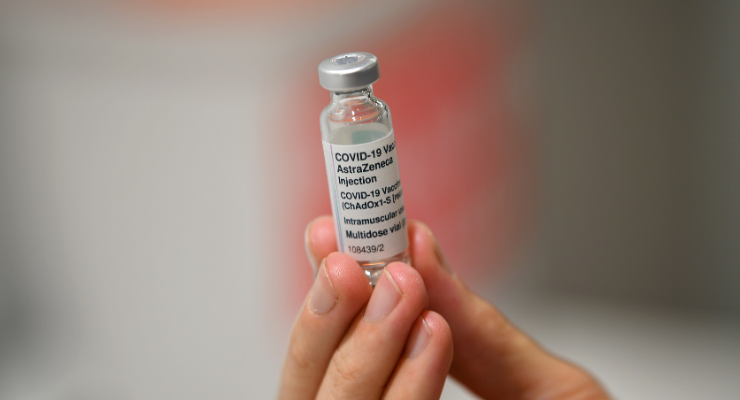
“I’m not getting the vaccine yet. I think I’ll just hang back and wait for one that’s better than what we have.” Doctor, 60
“I’m no anti-vaxxer, but these blood clots have got me thinking. Do I really need it?” Public relations consultant, mother of one, 53
“I’m fit and healthy. I reckon I’ll let others go ahead of me on this one.’’ Businesswoman, board member and mother of two, 54.
“We’ve got so much stock. I don’t know why, all of a sudden, people aren’t lining up.” GP receptionist, 30-something.
Those comments were delivered over the weekend as anti-vax rallies played out across the nation. And they might point to middle Australia being a much bigger obstacle to the vaccine rollout than a bunch of ignorant attention-seekers yelling down a microphone.
It’s become relatively easy to dismiss anti-vaxxers. Their ignorance is on display: “The vaccine actually gives you the virus”; “There’s a 5G chip hidden inside the vaccine.” Their unwillingness to look at history stands out, too — they blatantly disregard the role vaccines have played in killing off smallpox, polio and dozens of other diseases, such as cervical cancer.
While limited in knowledge, they can attract millions of supporters, including celebrities, as can be seen on the anti-vax social media pages. But their voices have become a bit like old, tired wallpaper, and that’s allowed us to put them in a box. ANTI-VAXXER. DO NOT OPEN. DO NOT LISTEN.
What’s more dangerous is what appears to be a growing reluctance to be vaccinated by middle Australia. Mums and dads. Businessmen and women. Elderly people who rely on their children for advice.
That’s been driven by a couple of factors. Ironically, Australia’s strong position in not allowing COVID-19 a stranglehold has meant that we feel safe. “But do we really need it?” a friend asked me yesterday. She’s strongly pro-vaccine and her children have all been vaccinated. “I’m not sure any more.”
She’s not alone. An Australian National University study published in February found there had been “a substantial increase in vaccine resistance hesitancy and a large decline in vaccine likeliness between August 2020 and January 2021″.
Indeed, the figure jumped from 12.7% to 21.7%. Worryingly, the biggest change was in those who went from being “definitely willing” to be vaccinated to only “probably willing” to get one. That’s worsened since February. Then people wanting the vaccine were lining up at GPs demanding it. Yesterday at one vaccine clinic the room was empty. That stock will go to waste.
Risk barometer
The potential for this to worsen is real because those now doubting it are sensible, reasonable people. They’ve seen the tiny number of blood clots. They’ve heard of slightly more cases of anaphylaxis. And their risk barometer is telling them that this vaccine now is not urgent. “I’ve told mum she doesn’t need to get it just yet; we might wait and see,” another friend said.
Fear of the virus drove many to demand a vaccine. Now fear of the vaccine risks driving many away. That type of thinking — which is being ignored in all the messaging — is a serious problem for our governments relying on a big vaccine rollout to open borders and businesses.
It’s also a problem if the pandemic takes hold, and India — which originally escaped the catastrophe we are now seeing — is a salutary lesson.
How does the government change it? The message is now as important as the jab. Forget the anti-vaxxers and the trolls. Forget banning the odd Facebook page or ignoring those chanting “it’s my body” down the main streets of our cities.
This battle needs to be won in electorates held by Labor and Liberal; in cities and rural areas; among the old and the young. If that requires incentivising voters, then that should be on the table too, because poor vaccination rates will add more than a headache to the nation’s plans to fight COVID.








Crikey is committed to hosting lively discussions. Help us keep the conversation useful, interesting and welcoming. We aim to publish comments quickly in the interest of promoting robust conversation, but we’re a small team and we deploy filters to protect against legal risk. Occasionally your comment may be held up while we review, but we’re working as fast as we can to keep the conversation rolling.
The Crikey comment section is members-only content. Please subscribe to leave a comment.
The Crikey comment section is members-only content. Please login to leave a comment.